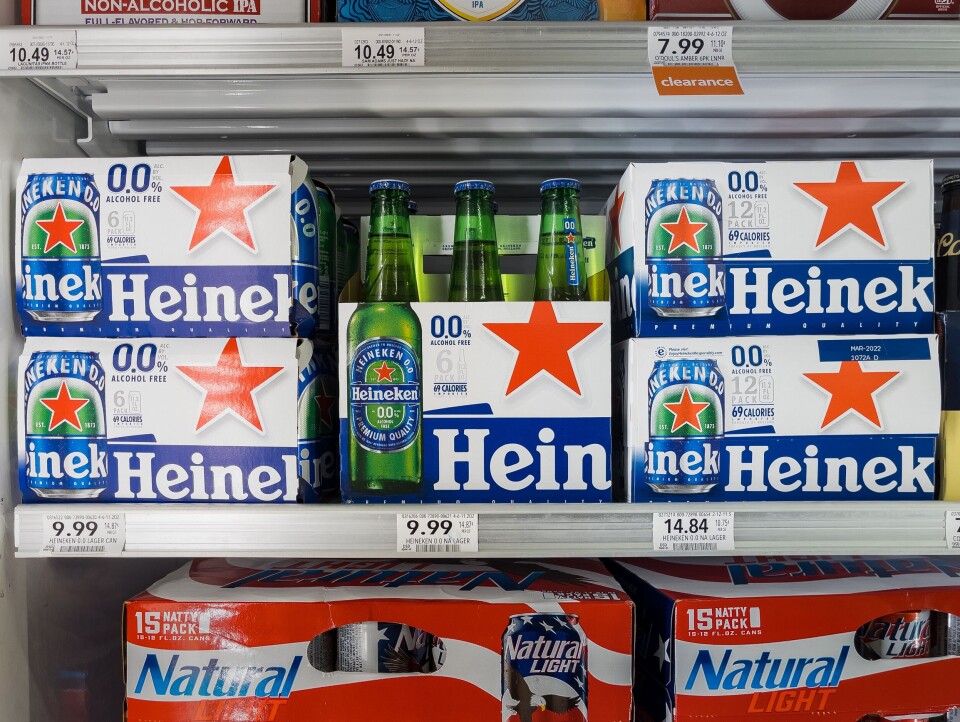-
Is France heading for another cold wave this month?
Predictions come amid unseasonably mild weather for much of January
-
France’s end-of-life law under debate as conditions examined
The text centres on the definition of and access to ‘medical assistance in dying’
-
Images: superb northern lights seen across France
Lights appear in rarer green colour following powerful solar flare
French still love to apero but with no- or low-alcohol wine and beer
French alcohol consumption has more than halved in the past 50 years, prompting a surge in no- or low-alcohol options

Drinks producers in France are adapting their products as figures show that people are drinking less and less alcohol, with consumption 2.5 times lower in 2017 than it was in 1960.
The average consumption in France has dropped from 26 litres per year per person (aged 15 or over) in 1960 to 11,7 litres in 2017, show figures from Santé publique France.
This can be largely explained by public health initiatives that have encouraged people to drink less. This includes the ‘Évin’ law from January 10, 1991, which significantly limited advertising for alcohol drinks in a bid to protect young people.
During lockdown and the Covid pandemic, people also drank less because they were unable to go out and became more concerned with health in general.
Young people especially are moving away from alcohol, partly due to the rise in ‘mindful’ and ‘conscious’ drinking. These ideas encourage a more measured approach to alcohol, including drinking just enough to relax socially but not so much to cause negative after-effects or a dependence.
Challenges such as ‘Dry January’, in which participants try not to drink alcohol for an entire month, are also spreading in popularity.
Read more: Dry January grows in France but not funded like anti-smoking campaign
Read more: Dry January in France: how our readers are changing drinking habits
Rise of low-alcohol options
Such changing attitudes have resulted in shifting trends among drinks producers in the country and worldwide, with a rising number of low-alcohol or alcohol-free options.
The current market leader in non-alcoholic beer is Tourtel Twist. Launched in 2014, it is now the leading such beer in the sector, having grown by 23% in 2021.
Other examples include the 1664 0.0% beer from Kronenburg (part of Danish brand Carlsberg), and a range of options from Heineken, which is the world’s second-largest beer brewer. It has now created a series of low- or no-alcohol options across its brands, including Desperados, Birra Moretti, and Amstel.
The quality and taste of non-alcoholic options are also growing considerably, said Elisabeth Pierre, author of beer guide le Guide Hachette des Bières.
She told BFM Business: “Now, in terms of taste, it’s often difficult to tell the difference compared to an alcoholic beer.”
Beer is not the only drink to go low; increased numbers of zero-alcohol spirits are also entering the market.
One such example is Atopia, from the British distiller William Grant & Sons, which the brand has marketed as similar to gin. Seedlip is another popular non-alcoholic drink that is often presented as a ‘gin substitute’ (although it cannot be termed that officially). It is often served with tonic water.
World number one drinks brand, Diageo, has also created a range of low-alcohol options; and there are now low- or no-alcohol versions made by Bacardi-Martini, and Pernod Ricard.
Even Coca-Cola, already no-alcohol but known as a popular mixer, has jumped on the no-alcohol botanicals and aromatic cocktails trend, with versions including ylang-ylang, dill, and lemongrass.
Wine producers are also joining in. The number one producer in France, Castel Frères, recently launched VeRy Zest, a sparkling option with just 6.5% alcohol.
Read more: Pro-wine President Macron pleases industry but upsets doctors
Hard seltzers, a popular option in the US, are also slowly making their way to France. These are flavoured, sparkling ‘waters’, with low alcohol and calorie content.
Despite the decline in overall consumption, health body Santé publique France last year warned that almost a quarter of people in France drink more alcohol than recommended (although the figure has remained stable, rising just 0.1% since 2017, when the figure was 23.6%).
Similarly, a poll from December found that France is the country where alcohol is drunk most often, on 132 days of the year – well above the global average of 101 – although the French were not the heaviest drinkers (Australia topped the list).
Related articles
What are alcohol limits for France-UK travel? Per person or per car?
Almost quarter of people in France drink more alcohol than recommended
France is country where alcohol is drunk the most often, poll finds
























